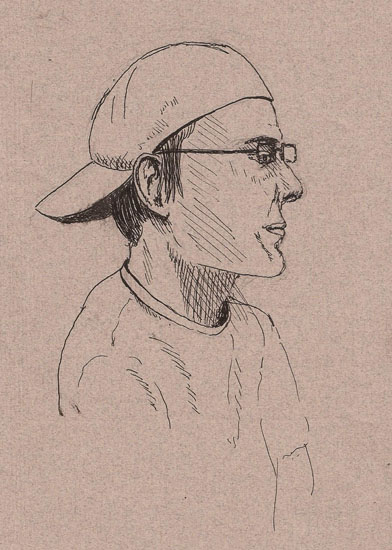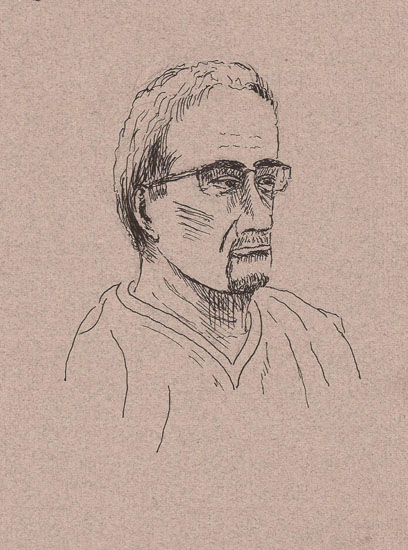Pat Roberson wrote to me asking if she was somehow missing my posts. I was glad she was missing my posts, but had to confess that they were being missed because I wasn’t writing them. If I could write about CT scans, doctor visits, constant blood and urine testing, and a bit of depression, I’d have lots to write about. As it is, however, writing about urban sketching would leave me empty-handed right now.
So, I’m going to talk about the little bit of sketching I’ve been trying to do, even though it’s sketching I’m unfamiliar with and even more problematic it’s being done with a tool I don’t understand at all … a pencil.
As the weather turned cold and my leg didn’t get any better I realized that this winter I was not going to be able to be an urban sketcher. I decided to view this as an opportunity (I brainwash myself regularly). I told myself that this would be a great time to set my pens aside and pick up a pencil in an attempt to master the tool. Everyone else starts with pencil but I was a pen-driver when I came to sketching and so all of my art baby steps were done with pen.
Further I decided that I would learn my pencil skills by drawing portraits, either from photos or from plaster casts. This was (is?) probably foolhardy because my least favorite sketching subject is people, but I need practice in this area too, so while the wind, rain and snow keeps me indoors, I might as well “get out of my comfort zone” and learn something new.
I started by drawing a bust of Mozart, a cast I picked up at a flea market in a small town east of Quebec City. Only an artist drives along a road to a sketching location and has to turn around to visit the flea market because they saw a white head sticking up from one of the tables.
 Anyway, it seems I got off to a bad start. I made a rank beginner mistake. “I was just learning so I don’t need good materials” was my thought and so I grabbed a pad of cheap watercolor paper that I’d rejected for use long ago and started drawing. It was too grainy for a pencil drawing but it didn’t matter; I was “just learning” after all. I struggled to get an even tone, partly because of my lack of skill but also because of that paper. And then I realized that I’d drawn Mozart’s eye too large so I tried to erase it. The paper immediately pilled and I had a REALLY rough spot where the eye used to be. I tried to fix it but was a fool’s errand.
Anyway, it seems I got off to a bad start. I made a rank beginner mistake. “I was just learning so I don’t need good materials” was my thought and so I grabbed a pad of cheap watercolor paper that I’d rejected for use long ago and started drawing. It was too grainy for a pencil drawing but it didn’t matter; I was “just learning” after all. I struggled to get an even tone, partly because of my lack of skill but also because of that paper. And then I realized that I’d drawn Mozart’s eye too large so I tried to erase it. The paper immediately pilled and I had a REALLY rough spot where the eye used to be. I tried to fix it but was a fool’s errand.
This frustrated me to the point of giving up, realizing that I was fighting the paper more than the pencil. So, here is my partially drawn Mozart, shown here with a black eye caused when he told Haydn that major-minor theme variations were silly. I’ll have to draw him again.






